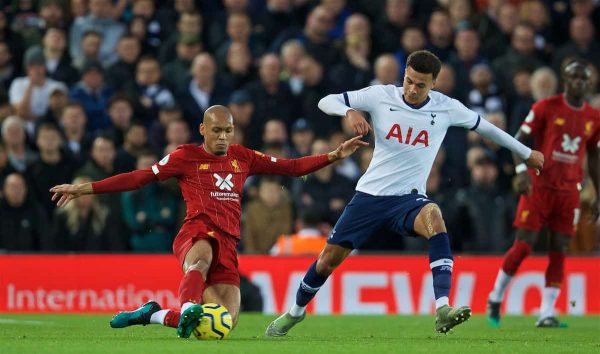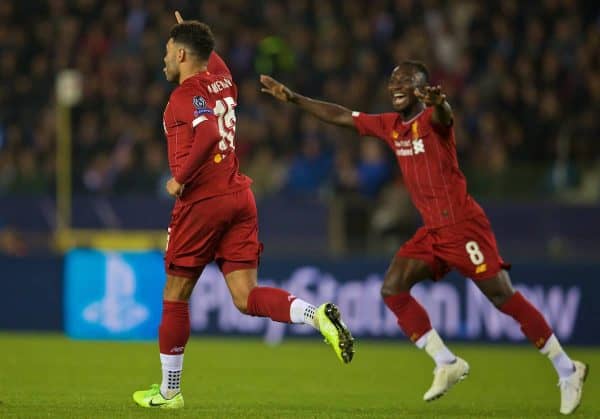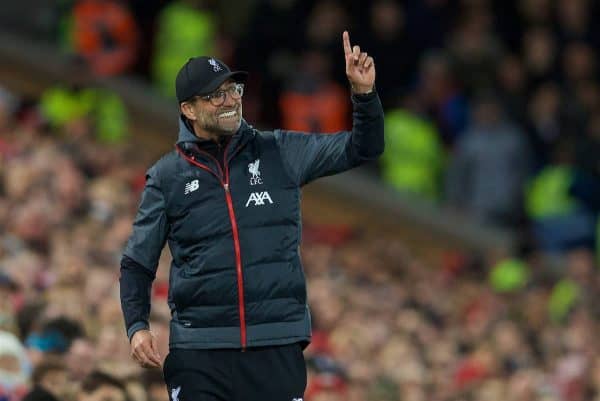Jurgen Klopp consistently seeks progression and the Reds’ pressing style is one facet of the game which he has become more selective over, as key statistics reveal.
A Jurgen Klopp side has long been associated with a relentless and intense pressing and counter-pressing style, an approach born out of the belief that “the best moment to win the ball is immediately after your team just lost it.”
But since Klopp’s first full season at the helm in 2016/17, Liverpool have constantly evolved their approach to pressing – due to both the personnel available and the opposition.
And in recent times many have suggested that they feel the Reds are moving away from their pressing style, but an intriguing video analysis from Tifo Football has argued that the boss has simply become more selective in how and when his team press for each game.
The analysis explains how Klopp first evolved from a “more possession-based approach relying on creative passes from players like Adam Lallana and Philippe Coutinho” to a more “direct style in 2017/18.”
A season which is suggested was the first whereby Klopp “had a squad who understood his concepts,” with the arrival of Mohamed Salah and Alex Oxlade-Chamberlain noted as key contributing factors to the teams’ progression.
Interestingly, it is then noted that Liverpool’s press dropped off in 2018/19 as attacking licence was handed to the full-backs which created a narrower midfield, where the further additions of Alisson and Fabinho proved key in the Reds moving to increase their control throughout a game and deploying a higher defensive line.
Tifo Football measured Liverpool’s pressing numbers in the Premier League using passes per defensive action (PPDA), “the number of opposition passes allowed per proactive defensive act – where the lower the number, the more proactive the defence is in its pressing.”
The findings show the Reds were progressively lowering the intensity of their press as the seasons ticked by, 2016/17 (8.05), 2017/18 (9.45), 2018/19 (10.08) – although every season was higher than the league average each year.
Now, however, despite the suggestion that Liverpool are continuing to press less, their games to date in 2019/20 show the opposite, with a recorded average PPDA of 8.46 – despite the smaller sample size it is only bettered by Klopp’s first season.

The video goes on to reveal Liverpool’s sole defeat in all competitions, the 2-0 defeat at Napoli, saw the Reds’ press drop to the lowest level thus far (10.8), but, on the whole, pressing levels have notably varied from one game to the next.
For example, the 4-1 win at Genk (4.5) was on the other end of the spectrum, while the 2-1 win over Tottenham (6.4) sits in the middle.
Two reasons are provided for the level of variation this season, with the first an attempt to protect the space in-behind the full-backs during their progression up the field, having previously been caught out by opposition sides
Liverpool “want to control some matches in terms of possession, rather than be direct all the time…and so the full-backs will offer width along the midfield line, rather than acting almost as wingers with a defensive responsibility,” it is explained.
“This means that Liverpool’s midfield line is where the pressing happens, and so they will allow the opposition to progress the ball in their own defensive third before engaging the press.
“Liverpool are pressing more situationally, which at times means that the press is engaged later.”

The second reason credited for such fluctuations is that the Reds lack a midfielder who can support attacks in the half-space, with Naby Keita and Alex Oxlade-Chamberlain’s recent injury woes consistently robbing Klopp of a progressive attacker from the middle of the park who can take advantage of a high press.
And as a result, “in games where Liverpool’s lack of forward thrust could be exposed, they are more content to block up the middle and press situationally, especially in the wide areas of the middle third.
“The general trend of the last few seasons might give the impression that Klopp is moving away from his pressing style – the truth is, he is becoming more discerning in when and how his team press on a game by game basis.”
Such tactical adjustments made week in and week out is further proof of the Reds’ constant evolution under Klopp and how the squad he has moulded over the years is now primed to make alterations at any given moment.
Moreover, Keita and Oxlade-Chamberlain’s recent return to the fold will present further opportunities to vary Liverpool’s pressing style – and the latter is currently doing no harm in pushing for such changes.
















Fan Comments